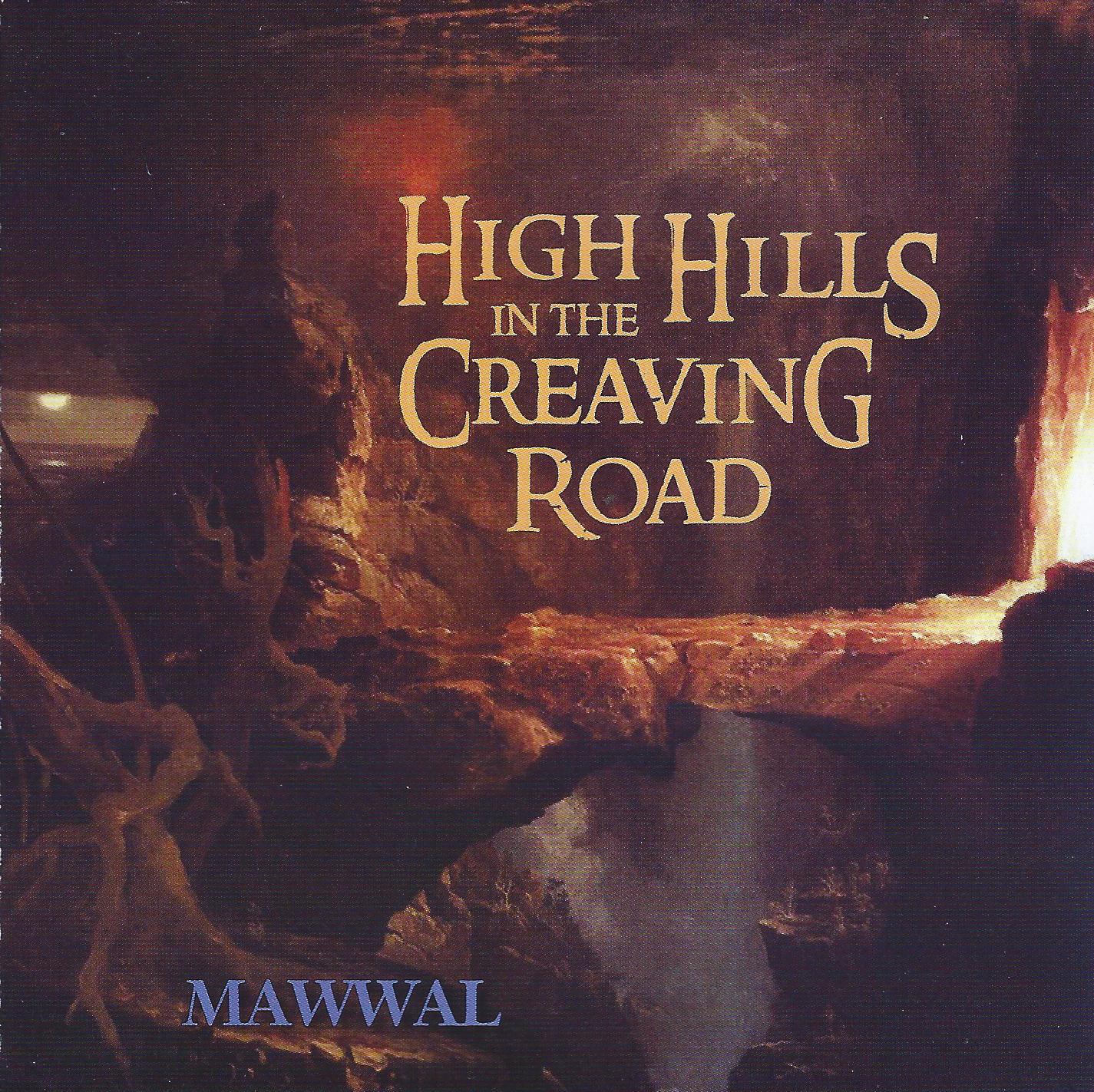 Massachusetts based musician and composer Jim Matus has released albums under several band names, the common thread being a focus on progressive world fusion. The 2001 released ISHQ album by Paranoise was my introduction to Jim’s music, followed by three Mawwal albums. Though familiar with them all, the new Mawwal album – High Hills in the Creaving Road – is the first of Jim’s music I’ve reviewed, and the first question that crossed my mind while listening was what the heck does “Mawwal” mean? Jim’s web site reveals that “Throughout the Middle East ‘Mawwal’ is a form of popular music that often criticizes society and is performed through improvisation.” CLICK HERE for a Wikipedia page with additional details.
Massachusetts based musician and composer Jim Matus has released albums under several band names, the common thread being a focus on progressive world fusion. The 2001 released ISHQ album by Paranoise was my introduction to Jim’s music, followed by three Mawwal albums. Though familiar with them all, the new Mawwal album – High Hills in the Creaving Road – is the first of Jim’s music I’ve reviewed, and the first question that crossed my mind while listening was what the heck does “Mawwal” mean? Jim’s web site reveals that “Throughout the Middle East ‘Mawwal’ is a form of popular music that often criticizes society and is performed through improvisation.” CLICK HERE for a Wikipedia page with additional details.
As you might by now guess, the music on High Hills in the Creaving Road is highly influenced by Arabic themes, though there are significant African influences as well. The album consists of Matus penned songs and traditional songs that Matus arranged. The album opens with Youmala, a traditional Gnawa song arranged and with additional lyrics by Matus. This prompted another Google search and Wikipedia page from which I learned that, “The Gnawa people originated from North and West Africa.”, and “Gnawa music is a rich repertoire of ancient African Islamic spiritual religious songs and rhythms.” The song has great grooves and I love the sound of the ethnic acoustic string instruments, which struck me as African versions of the sitar (in the feel they communicate rather than the sound). The vocals, both male and female, are passionate and have an uplifting spiritual quality. Search “Youmala” on YouTube and you’ll get several hits, including a variety of Gnawa music.
One More Arabia is similar, but with tabla-like percussion more prominently adding to the groove. Mustt Mustt is a cover of a Nusrat Fateh Ali Khan song arranged by and with additional lyrics by Matus. (Another one worth searching on YouTube for a reference point.) Mawwal’s interpretation is very much in the spirit of Ali Khan, but the acoustic instrumental/percussion combination and beautiful soloing violin, along with the Matus/Jill O’Brien vocals give a distinctive Mawwal character to the music. We Must Fall features steadily grooving ethnic percussion, incredible vocals from Jill O’Brien and Laila Salins, some of which are almost operatic, and pied piper soloing from the bansuri flute, which Wikipedia describes as “a transverse flute of India made from a single hollow shaft of bamboo with six or seven finger holes”, and to my ears sounds like something between a flute and a piccolo.
The title track is one of the most compositionally intricate songs of the set, with the stringed instruments and percussion seeming to be operating in multiple thematic directions, yet it all comes together seamlessly. The violin solos and vocals are nearly feverish in their intensity, and Percy Jones’ fretless bass, not surprisingly, injects a jazz element to the piece (Jones just guests on this one track). Khawaja Piya is a traditional Pakistani song arranged by Matus, and another one worth a YouTube search for the valuable reference points it returns. The song has beautiful instrumentation, including cool grooving tablas.
No Finer Men Than We is a little different, with the vocals giving the music a Celtic feel, while the instrumentation remains firmly in the Middle Eastern themes that characterize the rest of the album. But we’ve also got trumpet, adding yet another dimension to the music, the whole being a variety of intriguing contrasting elements. Wrapping up the set is what seems to be a dual song. Kosh Chenare is a traditional Uzbek song arranged by Matus, which blends into the Matus composed The Burden’d Air/Eleven Shreds Of No. Gently flowing music gives this a somewhat pastoral feel, though the grooves kept my body in motion and the characteristically impassioned vocals kept me inspired and alert.
Aural Innovations readers will be well acquainted with the use of Middle Eastern and Indian themes in psychedelia, and while Mawwal is by no means a psych band, the music transported me in ways very similar to what I experience with psychedelic music. Though it certainly seems like all the music is carefully arranged, most of the songs have a loose jamming feel that allowed me to groove along comfortably throughout the entire album.
For more information visit the Jim Matus web site at: http://www.jimmatus.com
Reviewed by Jerry Kranitz
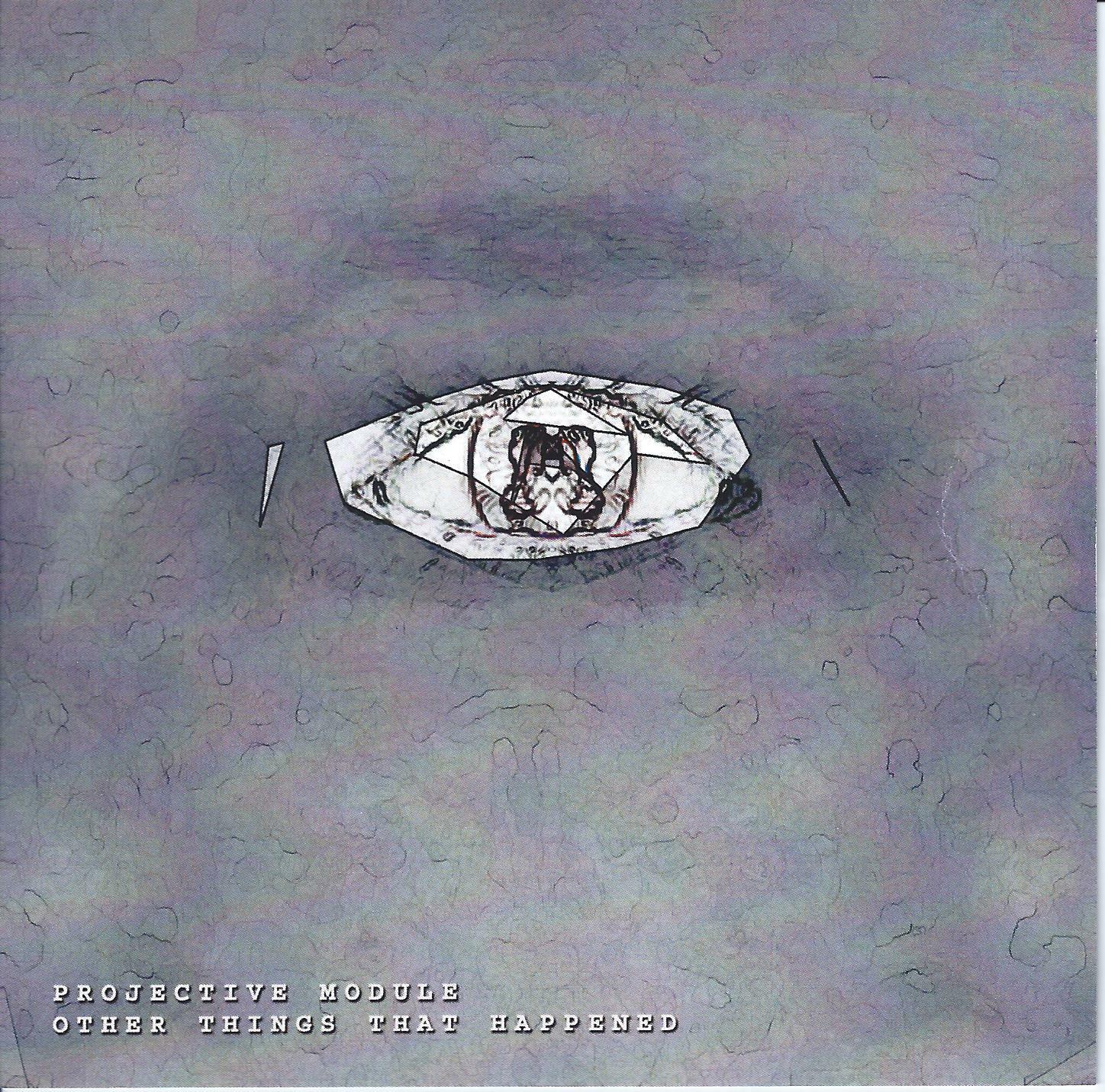 Projective Module is the latest project from J.C. Mendizabal, aka Kyron. And like so many well-produced Kyron albums, I find that the production of Other Things That Happened is also very well executed.
Projective Module is the latest project from J.C. Mendizabal, aka Kyron. And like so many well-produced Kyron albums, I find that the production of Other Things That Happened is also very well executed. 
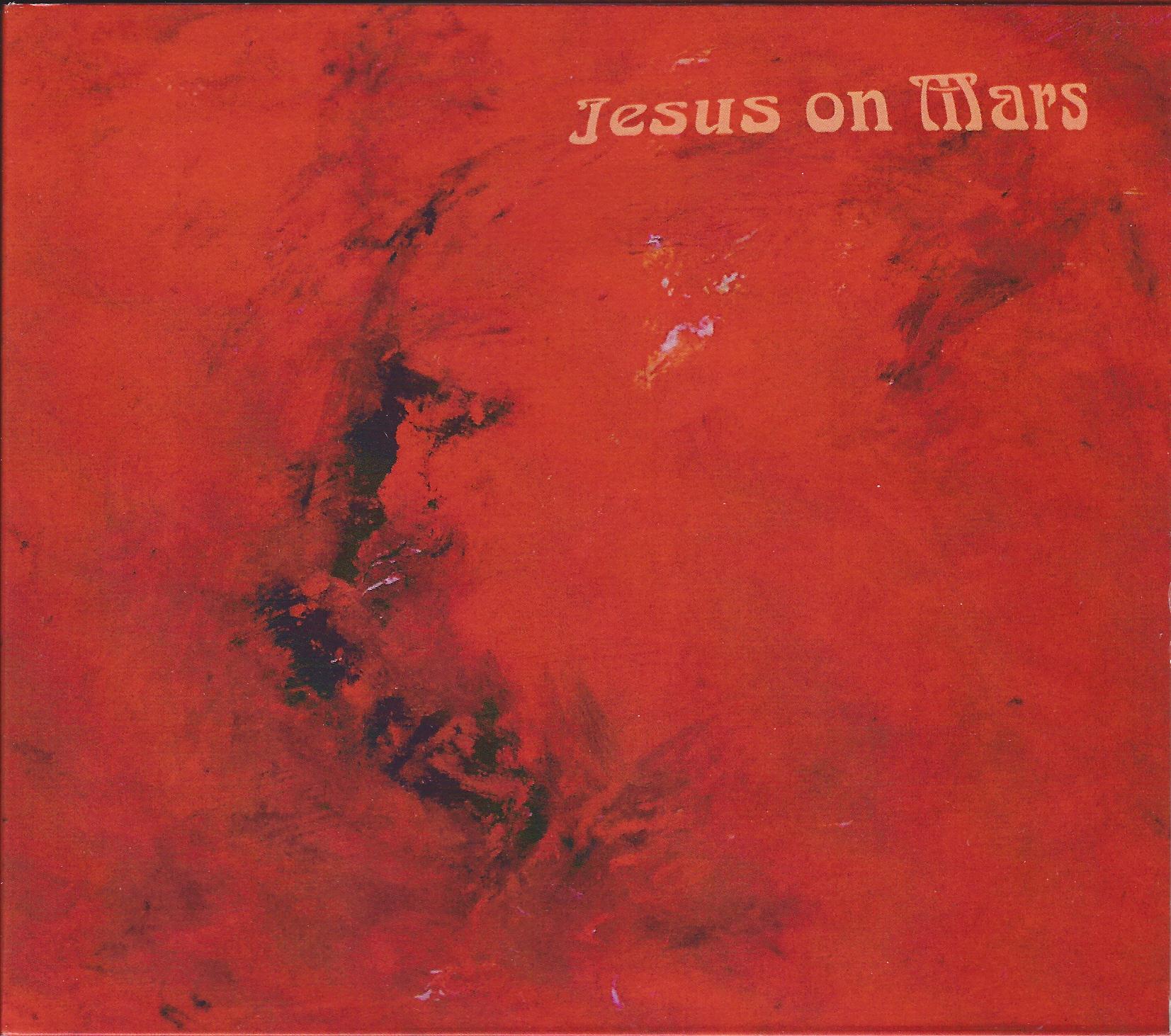 Playing heavily on the noise aspect of synthesizers, Jesus on Mars, in my opinion should be sent to Mars, and left to twiddle his knobs alone!
Playing heavily on the noise aspect of synthesizers, Jesus on Mars, in my opinion should be sent to Mars, and left to twiddle his knobs alone! “Stubb” the album serves as both the recorded debut for the three-piece band of that name, and the first release by Superhot Records. Hailing from the UK, Stubb the band consist of Jack Dickinson on guitar and vocals, Pete Holland on bass and backing vocals, and Chris West on drums. The power-trio format and heavy blues rock approach bring to mind images of The Jimi Hendrix Experience, Cream (although without the quirkiness) and Taste, and all three bands are reflected in the music. No drum machines, synthesizers, lofty concepts or philosophising here (at least not until the acoustic Crosses You Bear, a two minute interlude that sits smack in the middle of the album), this band is all about fuzzy riffs, and speedy guitar solos, with generous amounts of wah-wah.
“Stubb” the album serves as both the recorded debut for the three-piece band of that name, and the first release by Superhot Records. Hailing from the UK, Stubb the band consist of Jack Dickinson on guitar and vocals, Pete Holland on bass and backing vocals, and Chris West on drums. The power-trio format and heavy blues rock approach bring to mind images of The Jimi Hendrix Experience, Cream (although without the quirkiness) and Taste, and all three bands are reflected in the music. No drum machines, synthesizers, lofty concepts or philosophising here (at least not until the acoustic Crosses You Bear, a two minute interlude that sits smack in the middle of the album), this band is all about fuzzy riffs, and speedy guitar solos, with generous amounts of wah-wah.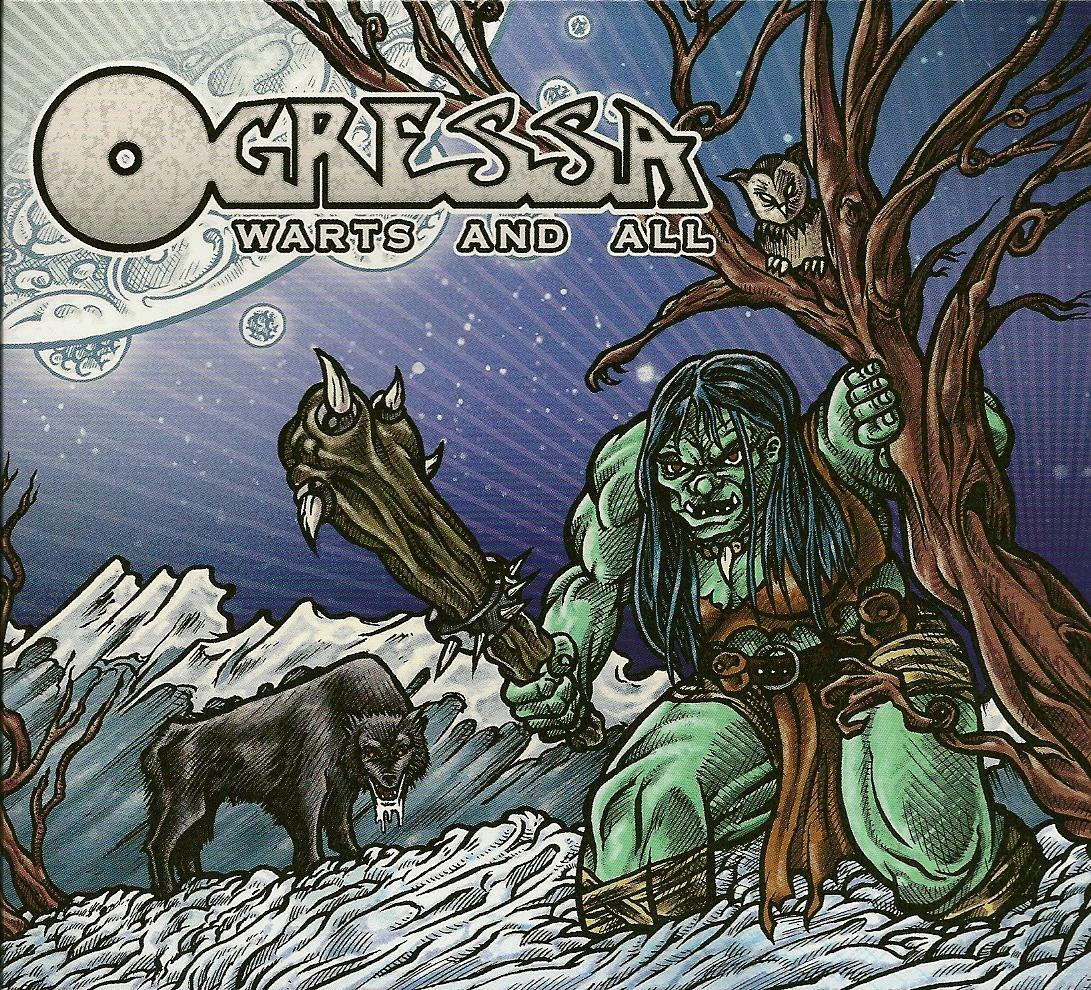 If there was ever a CD cover that gave a perfect image of the music found on the disc inside, Ogressa’s Warts and All is surely it. The band name and album title only enhance the expectation of sludgy, grimy stoner rock, a promise that is absolutely delivered on throughout the album. The cover of Warts and All features the titular Ogressa advancing menacingly, brandishing a wooden club with iron spikes like she is getting set to bash your brains out, and with a suitably disgruntled look on her face. The mean dude in the shadows of the Ogressa monster is Zach Huskey, long surviving member of California stoner rock band The Dali’s Llama. While that band remains very much a going concern, Huskey is presumably suffering from creative overload, hence this new side project, where he is joined by Whores of Tijuana drummer Trent Ramseyer, who switches to lead vocals for Warts and All. While not likely to challenge Pavarotti or Bono, Ramseyer’s gravelly Ozzy-meets-Lemmy-in-a-dark-alley voice is well suited to the dirty, heavy guitar sounds of Ogressa.
If there was ever a CD cover that gave a perfect image of the music found on the disc inside, Ogressa’s Warts and All is surely it. The band name and album title only enhance the expectation of sludgy, grimy stoner rock, a promise that is absolutely delivered on throughout the album. The cover of Warts and All features the titular Ogressa advancing menacingly, brandishing a wooden club with iron spikes like she is getting set to bash your brains out, and with a suitably disgruntled look on her face. The mean dude in the shadows of the Ogressa monster is Zach Huskey, long surviving member of California stoner rock band The Dali’s Llama. While that band remains very much a going concern, Huskey is presumably suffering from creative overload, hence this new side project, where he is joined by Whores of Tijuana drummer Trent Ramseyer, who switches to lead vocals for Warts and All. While not likely to challenge Pavarotti or Bono, Ramseyer’s gravelly Ozzy-meets-Lemmy-in-a-dark-alley voice is well suited to the dirty, heavy guitar sounds of Ogressa.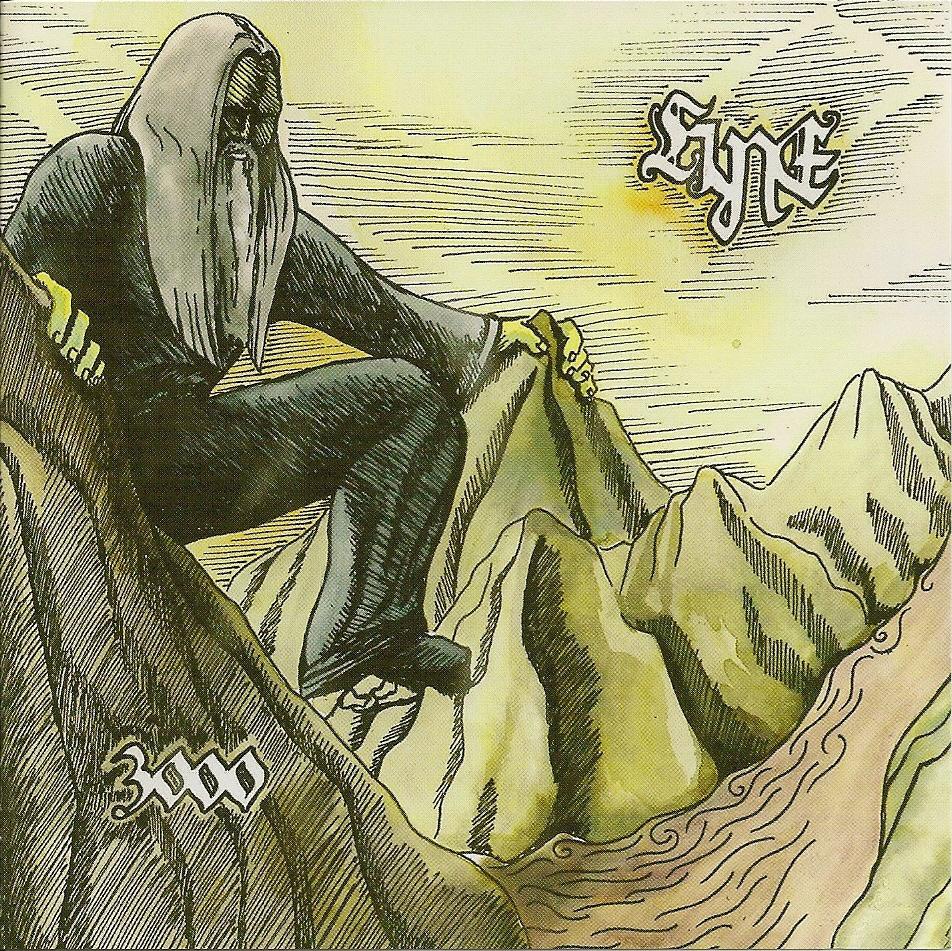 Not really sure as to what drew my attention to this CD to review for Aural Innovations. Perhaps it’s because I noticed the CD was a left-over from the submission list of titles to cover from the previous list of choices. Or maybe I simply dug the CD cover. Either way, I thoroughly enjoyed this debut CD effort from Hyne – a five-piece stoner rock collective from Hamburg, Germany. I couldn’t help but notice that this CD has no bar code or a catalog number. Therefore, I could only assume that the band had assembled this CD themselves which also sort of impressed me. Liked about every track here -like Loafer (which I thought sort of maybe had a Monster Magnet-like vibe), the full-throttled rocking title cut 3000 that definitely reminded me of Motorhead, the ass-kicking Slow Suicide (are we having another Motorhead moment?), Suck It which belongs on Internet radio and the nine-minute stoner mind-blower Cries From The Hidden which is, in my opinion, the CD’s best song – hands down. That leaves Vertical Roll, the head-banging Witch’s Cauldron and the finale Spirit of Now to this thirty-five minute outing of pure stoner / metal mayhem. 3000 undoubtedly possesses heavy guitars, mighty bass and droning drums to take its listeners all the way in. Sure, this sort of stoner rock has in fact been done over many times throughout the past so-many years, but 3000 is a fully welcomed (addition) to all the similar CD’s out there.
Not really sure as to what drew my attention to this CD to review for Aural Innovations. Perhaps it’s because I noticed the CD was a left-over from the submission list of titles to cover from the previous list of choices. Or maybe I simply dug the CD cover. Either way, I thoroughly enjoyed this debut CD effort from Hyne – a five-piece stoner rock collective from Hamburg, Germany. I couldn’t help but notice that this CD has no bar code or a catalog number. Therefore, I could only assume that the band had assembled this CD themselves which also sort of impressed me. Liked about every track here -like Loafer (which I thought sort of maybe had a Monster Magnet-like vibe), the full-throttled rocking title cut 3000 that definitely reminded me of Motorhead, the ass-kicking Slow Suicide (are we having another Motorhead moment?), Suck It which belongs on Internet radio and the nine-minute stoner mind-blower Cries From The Hidden which is, in my opinion, the CD’s best song – hands down. That leaves Vertical Roll, the head-banging Witch’s Cauldron and the finale Spirit of Now to this thirty-five minute outing of pure stoner / metal mayhem. 3000 undoubtedly possesses heavy guitars, mighty bass and droning drums to take its listeners all the way in. Sure, this sort of stoner rock has in fact been done over many times throughout the past so-many years, but 3000 is a fully welcomed (addition) to all the similar CD’s out there. 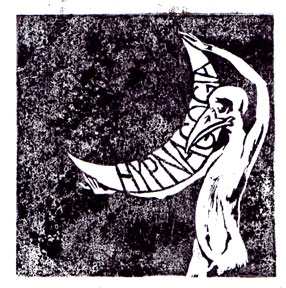 Of the hundreds of CD’s, tapes and vinyl albums I have, this release is one of a handful that I go to repeatedly if I want music that is truly art and music that sounds better and different every time I listen to it!! From Stillwater Oklahoma, The Gray Field Recordings is R. Loftiss and friends and Hypnagogia is a reissue on the excellent Reverb Worship label.
Of the hundreds of CD’s, tapes and vinyl albums I have, this release is one of a handful that I go to repeatedly if I want music that is truly art and music that sounds better and different every time I listen to it!! From Stillwater Oklahoma, The Gray Field Recordings is R. Loftiss and friends and Hypnagogia is a reissue on the excellent Reverb Worship label.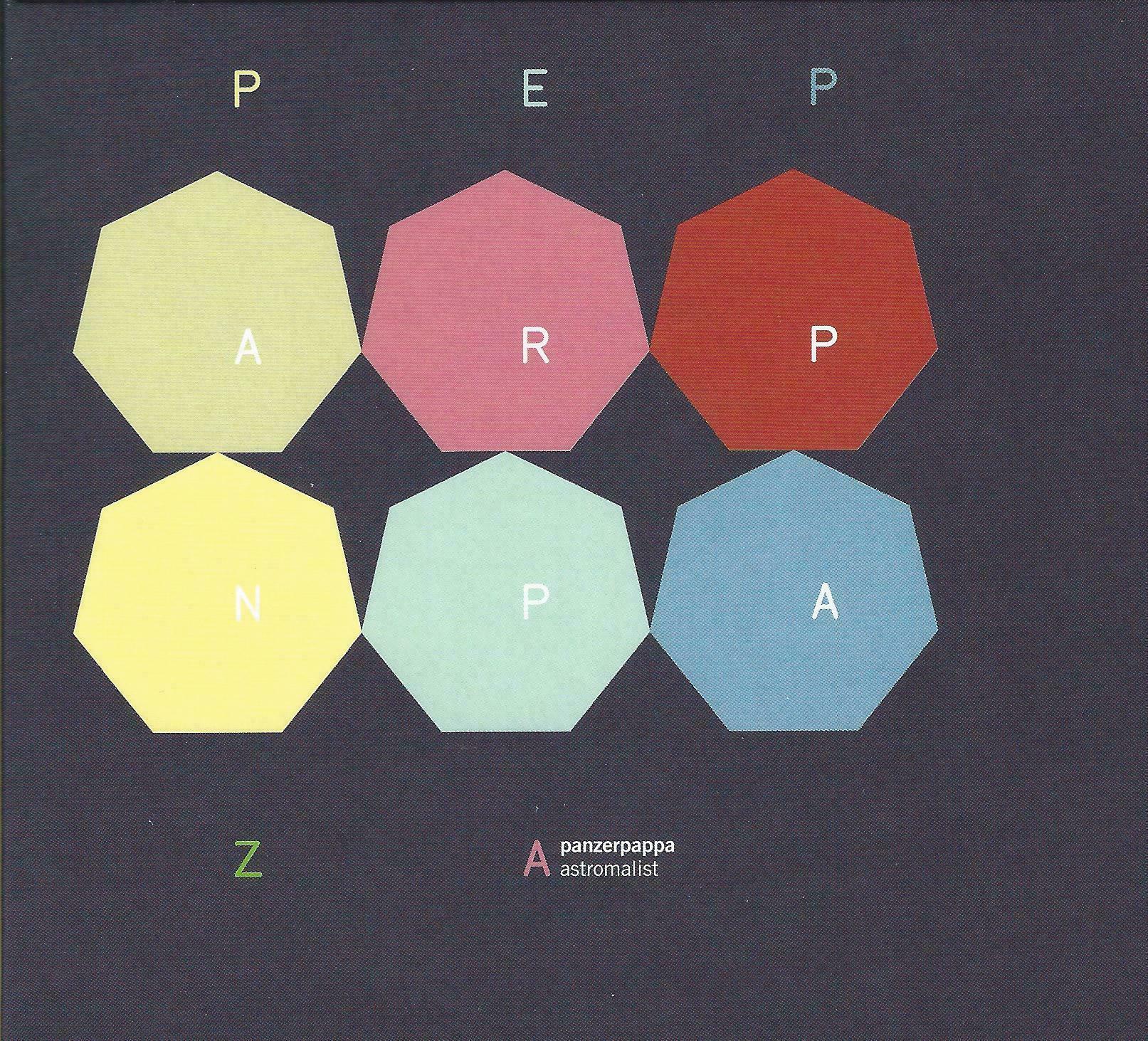 Panzerpappa are a Norwegian quartet with an interesting variety of instrumentation that includes saxophone, keyboards, drums, bass, electric and acoustic guitars, and everyone is credited with percussion. Numerous guests contribute bassoon, English horn, flute, xylophone, vibraphone, cello, violin and viola. Astromalist is the band’s fifth album since their debut in 2000, and their first for the Rune Grammofon label (and my introduction to their music).
Panzerpappa are a Norwegian quartet with an interesting variety of instrumentation that includes saxophone, keyboards, drums, bass, electric and acoustic guitars, and everyone is credited with percussion. Numerous guests contribute bassoon, English horn, flute, xylophone, vibraphone, cello, violin and viola. Astromalist is the band’s fifth album since their debut in 2000, and their first for the Rune Grammofon label (and my introduction to their music). Massachusetts based musician and composer Jim Matus has released albums under several band names, the common thread being a focus on progressive world fusion. The 2001 released ISHQ album by Paranoise was my introduction to Jim’s music, followed by three Mawwal albums. Though familiar with them all, the new Mawwal album – High Hills in the Creaving Road – is the first of Jim’s music I’ve reviewed, and the first question that crossed my mind while listening was what the heck does “Mawwal” mean? Jim’s web site reveals that “Throughout the Middle East ‘Mawwal’ is a form of popular music that often criticizes society and is performed through improvisation.”
Massachusetts based musician and composer Jim Matus has released albums under several band names, the common thread being a focus on progressive world fusion. The 2001 released ISHQ album by Paranoise was my introduction to Jim’s music, followed by three Mawwal albums. Though familiar with them all, the new Mawwal album – High Hills in the Creaving Road – is the first of Jim’s music I’ve reviewed, and the first question that crossed my mind while listening was what the heck does “Mawwal” mean? Jim’s web site reveals that “Throughout the Middle East ‘Mawwal’ is a form of popular music that often criticizes society and is performed through improvisation.” 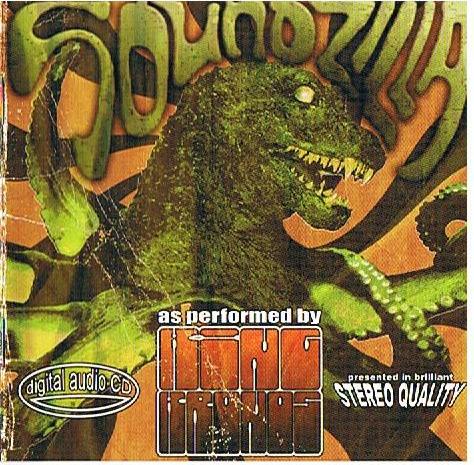 King Kronos herald from Germany and can be loosely categorised as stoner rock, though they cover broader musical ground on Soundzilla. They are a five piece band featuring a female vocalist and a twin guitar attack that sets them apart from the more compact riffage of Acid King, the easiest band to directly compare them with. Be warned however, one false click on the internet will bring you face to face with a ginger-dreaded rapper operating out of the American Midwest under the same title!
King Kronos herald from Germany and can be loosely categorised as stoner rock, though they cover broader musical ground on Soundzilla. They are a five piece band featuring a female vocalist and a twin guitar attack that sets them apart from the more compact riffage of Acid King, the easiest band to directly compare them with. Be warned however, one false click on the internet will bring you face to face with a ginger-dreaded rapper operating out of the American Midwest under the same title!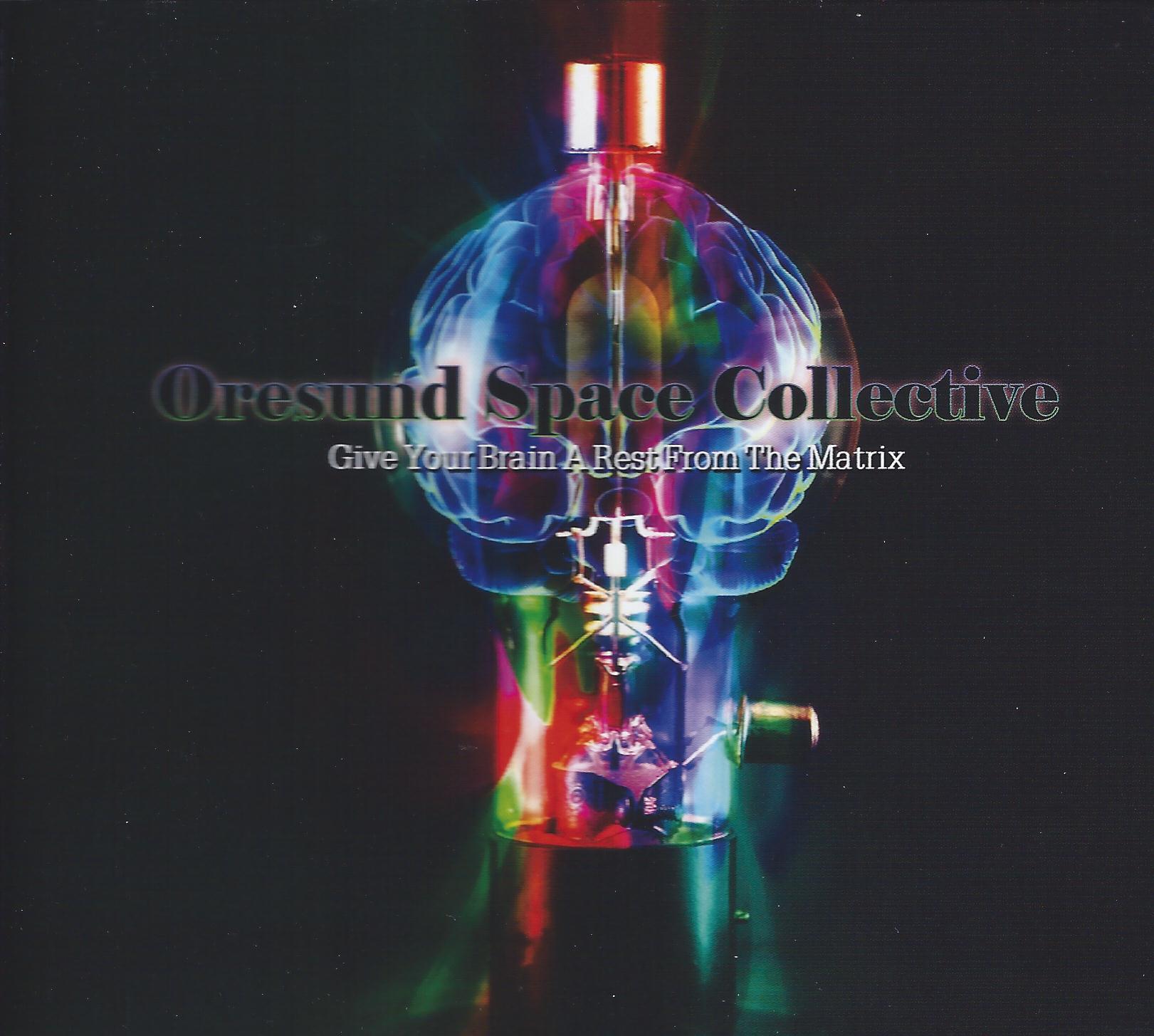 Since being formed by Dr. Space (aka Aural Innovations’ own Scott Heller) in 2004, Oresund Space Collective have been recording and touring at an amazing rate, with Give Your Brain a Rest from the Matrix being their 14th proper release, although the number of limited edition releases using one format only (such as the vinyl-only Entering the Space Country and Phaze Your Fears from 2011 and 2012 respectively) make it hard to keep track of just what is out there. This CD release (limited to 500 copies only, although possibly to be released as a double LP at some future point) was recorded at the same session – Sept 26th 2010 – that produced Space Country and Fears. To find another instance of just one single session producing enough material for three different albums, one would have to go back to the legendary Amon Duul session of 1968, which birthed several rather unlistenable albums. Fortunately, the four lengthy tracks on Give Your Brain a Rest from the Matrix contain far more musical depth than the acid-drenched communal noodlings of the original Amon Duul.
Since being formed by Dr. Space (aka Aural Innovations’ own Scott Heller) in 2004, Oresund Space Collective have been recording and touring at an amazing rate, with Give Your Brain a Rest from the Matrix being their 14th proper release, although the number of limited edition releases using one format only (such as the vinyl-only Entering the Space Country and Phaze Your Fears from 2011 and 2012 respectively) make it hard to keep track of just what is out there. This CD release (limited to 500 copies only, although possibly to be released as a double LP at some future point) was recorded at the same session – Sept 26th 2010 – that produced Space Country and Fears. To find another instance of just one single session producing enough material for three different albums, one would have to go back to the legendary Amon Duul session of 1968, which birthed several rather unlistenable albums. Fortunately, the four lengthy tracks on Give Your Brain a Rest from the Matrix contain far more musical depth than the acid-drenched communal noodlings of the original Amon Duul.